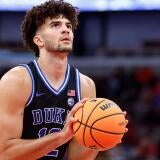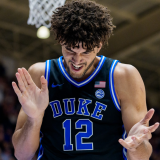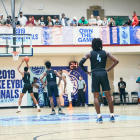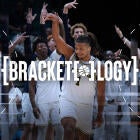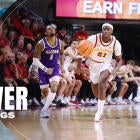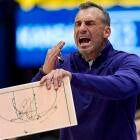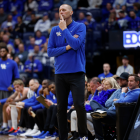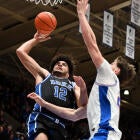
Coronavirus fallout: College basketball coaches bracing for the big changes coming in recruiting
College hoops' biggest discussion point now is how the recruiting calendar will look this summer
Lifestyle adjustments brought on by the coronavirus-forced halt to the sports world has hit the college basketball coaching community with seemingly never-ending reverberations. The biggest discussion point from the 15-or-so coaches I've spoken with this week is about whether or not there will be an in-person recruiting calendar before the fall.
College basketball recruiting has gone 100% electronic and could remain that way for months. Because in-person contact is all but eliminated -- from a recruiting standpoint, the NCAA has banned in-person recruiting until at least mid-April -- it's FaceTime and Zoom overload. The end-of-April live period is not yet officially dead (a moratorium until April 15 is in place for now) but that is an inevitability. Many coaching staffs wait/bank on that April period to evaluate and sign, and though those coaches would never admit it publicly, those who recruit against them know they're in a tight spot.
A huge curiosity is what the summer will look like. Without summer classes (a predicted likelihood) players won't be on campus and won't be in ideal condition come the early fall. Some schools will have bigger online course offerings than others, and questions about academics come along with that.
Hopes are already so low for later this year that multiple coaches told me they'd put it between a 5-10% chance that there is a July live recruiting period, a crucial time for coaches to evaluate players.
"There isn't going to be a Peach Jam this year," one ACC coach said of the most important recruiting event of the year.
Similar pessimism exists for the next few of months in terms of any types of visits. The NABC initiated the March/April moratorium on in-person recruiting by imploring the NCAA for an urgent and immediate halt. Given COVID-19's unprecedented ability to change the dynamic of our planet, the NCAA pushed legislation through with an unorthodox quickness. That process could repeat itself in the next month-plus in regard to July. Ultimately, the Division I Council -- the same voting body that will determine if the transfer rule will be amended -- is charged with making any and all rule changes pertaining to college basketball recruiting.
"Every scholarship is so important that the lack of access and ability to have recruits around us for [on a visit], or in their homes, to really get to know people, it makes it a little bit scary," UConn coach Dan Hurley said. "You could fool somebody on the phone for a half an hour. But in person? Two breakfasts, couple lunches, couple dinners, people start getting comfortable and reveal themselves. I think there's going to be a lot of mistakes both ways."
What's more, scuttlebutt has already surfaced about pushing a one-time-only live period into August or September if the coronavirus situation prevents any crowd-gathering until then at the earliest. Even then, maybe no crowds at any events? Coaches wonder: Wouldn't there have to be mandated testing every day of players, coaches, etc.? The NCAA, with the help of the NABC and other bodies, may be forced to get creative in order to offer 2021 prospects the best chance at being seen, earning scholarship opportunities and bettering their futures.
"Not exactly the NCAA's forte," one longtime coach said.
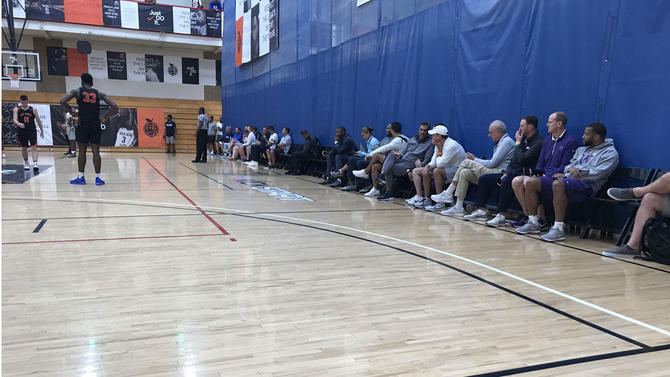
Evaluations could ultimately vault back into the style of early 1980s, before shoe-company influence took over and non-scholastic basketball became the only true way to land players. Might high schools be the spots -- the only spots -- for an abbreviated live calendar into the mid-to-late fall? Starved for eval opportunities, would coaches pack into high school gyms in October to watch practices? How would that affect protocol for official visits? What will the travel in this country look like then? Will schools find more and more players staying closer to home out of necessity due to regulations that reduce their opportunities to visit campuses or get on airplanes?
"I think everybody's anxious," Ohio State coach Chris Holtmann said. "Once the curve gets flattened are we going to go back to normal life? And then could you see another situation happen that's happened here with the tournament and everything that everything gets shut down [again]? That's what I'm curious about."
Coaches are forced to be imaginative right now, and many made the point that those who took advantage of a recently changed rule that allowed high school juniors to take official visits are the ones who could benefit in a big way with forthcoming commitments. One coach painted a hilarious visual: assistants around the country walking alone on near-empty campuses, giving hour-long FaceTime tours to prospects as a last-ditch effort to show off their school in an attempt to woo and win out over rivals.
And remember, this is scheduled to be the second year of the (polarizing) NCAA-sanctioned evaluation camps, which take place at the end of July. If all else fails, do those get pushed back, and then nothing else is on the table? Coaches are worried the NCAA might use such an opportunity to seize control, utilize its power and resources and force the only live period to be at those camps, which received mixed reviews (and minimal attendance from high-ranking prospects) last year.
How prospects are impacted in terms of skill development is also of big concern -- as it is throughout all sports right now. Balls aren't bouncing in gyms (for the most part). Kids used to getting in five-on-five or even two-on-two games aren't even doing that now. Development is stagnating and coaches are wondering if that will have a tangible impact on the quality of college basketball next season, should next season arrive as currently scheduled.
Coaches, their current players and prospects they are recruiting are more electronically tethered than ever. While most players are back home, there are still some in situations that require them to remain on largely deserted campuses in potentially lonelier environments. UConn, for example, has multiple players from the greater New York City area. It's not prudent to send them home; New York is currently and by far the most inflamed region in the United States for positive COVID-19 cases.
This separation situation has coaches concerned about everything from academics to conditioning to mental health to diet. In fact, the widespread unknowns throughout college sports are practically unending. In addition to the affable anecdotes of honey-dos, and the mass-cleanings of garages, attics and closets, a common motif from coaches I talked with: all this "free time" has been a strange if not slightly welcomed experience.
These are just a handful of the couple dozen scenarios coaches are already working through as they wait on answers and guidance. Recruiting is the lifeblood of a program's wellness, and college basketball's ecosystem has never looked so murky.



